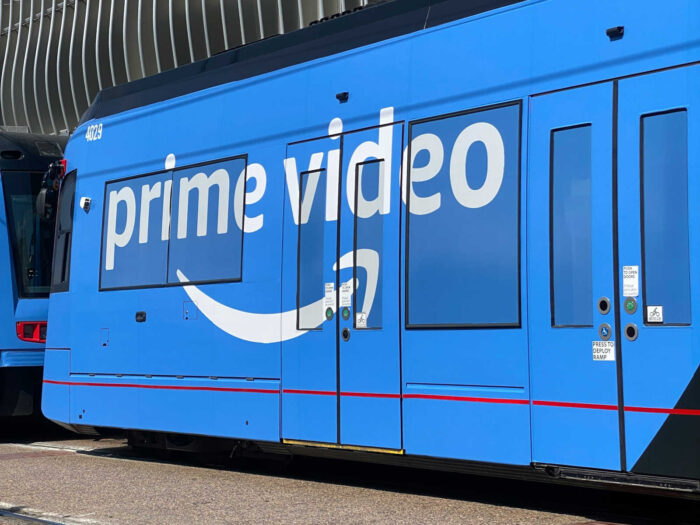
Amazon (Amazon.com, Inc.) has a dominant position in many of its markets, indicating strategic fit of strengths, weaknesses, opportunities, and threats for success in addressing the issues shown in this SWOT analysis of the business.
The SWOT Analysis model is applied through an internal analysis of strengths and weaknesses (internal strategic factors) and an external analysis of threats and opportunities (external strategic factors) relevant to the IT and services business.
This SWOT analysis case of Amazon shows strengths for overcoming the company’s weaknesses, countering threats to its business, and maximizing opportunities in Internet-based services, retail, consumer goods, consumer electronics, health care, entertainment, and other operations.
This SWOT analysis of Amazon also points to the importance of a strong brand image and effective technological capabilities, along with other strengths appropriate to the company’s various industries and target markets.
Its technological nature puts the business in competition with aggressive and innovative multinational firms, as described in the Five Forces analysis of Amazon. Such a competitive landscape requires the company’s strategic coherence and innovation to manage the challenges assessed in this SWOT analysis.
Amazon’s Strengths
Strengths in this SWOT analysis are business competencies, resources, and capabilities for competitive advantages for the technology company’s growth and improvement. Amazon’s success represents the suitability of business strengths to industry and market conditions.
In this SWOT analysis, such strengths are internal strategic factors that minimize the negative impacts of competitors and other challenges in the retail, technology products, and online services markets. The following are Amazon’s strengths:
- Strong global brands for online services
- Moderate and increasing business diversification
- High capability for rapid technological innovation, especially in online services
- Excellent logistics capabilities
Amazon has the strongest brand in the online retail market. This factor is partly responsible for the company’s rapid growth linked to introducing new products outside of its e-commerce business.
In this SWOT analysis case, strong brands help maintain consumer confidence in the technology business and its products. The high value of Amazon brands also strengthens new products and business entry into new markets or industries.
On the other hand, business diversification is an internal strategic factor that also functions as a strength in this SWOT analysis of Amazon. This diversification strengthens the business by creating complementary revenue channels that stabilize Amazon despite competitive forces.
The business offers diverse goods and services, such as private-label goods, consumer electronics, cloud computing, digital content distribution, and online and brick-and-mortar retail services.
Moreover, Amazon’s high capability for rapid technological innovation is a strength that enables strategic adjustment that responds to technological trends in the industry. This competitive advantage enables the company to benefit from business growth opportunities involving information technology.
Amazon’s company culture (business culture) helps support this innovation capability through human resource inputs and organizational leadership. For example, corporate cultural expectations promote innovative ideas for technological innovation in business processes.
Amazon’s excellent logistics capabilities is a further business strength for overcoming the weaknesses and threats identified in this SWOT analysis. The success of the company’s online marketplace reflects this competitive advantage in logistics.
The internal factors in this aspect of the SWOT analysis support business development toward the fulfillment of Amazon’s mission statement and vision statement. The company’s strengths are a foundation for successful products that match customers’ needs.

Amazon’s Weaknesses
In this SWOT analysis case, weaknesses are internal factors that relate to difficulty, limitation, or inability in achieving the technology company’s business objectives. Amazon’s weaknesses are as follows:
- Imitable business model
- Limited global market presence (limited penetration in developing markets)
- Limited brick-and-mortar presence
Amazon has a business model that other organizations can imitate. For example, other firms can establish their own e-commerce marketplace websites. In this SWOT analysis, such imitability is seen as a weakness that encourages more competition, especially in terms of online services.
Also, Amazon’s limited international presence, along with limited penetration in developing markets, weakens the business. This internal strategic factor prevents the technology company from maximizing profits based on the high economic growth rates of these markets.
This SWOT analysis of Amazon points to such a weakness as an internal factor that challenges the company’s potential for business growth and higher revenues in markets where regional or local e-commerce companies have a stronghold.
On the other hand, the company’s limited brick-and-mortar presence is a barrier to expansion and revenue growth in the non-online market. Nonetheless, with new brick-and-mortar operations and the stability of subsidiaries, like Whole Foods Market, Amazon ensures its potential growth in non-online markets.
Overall, the weaknesses in this SWOT analysis impose challenges to Amazon’s growth in retail, e-commerce, and other online services. These weaknesses may necessitate modifications to business strategies in e-commerce and other business areas.
Addressing these weaknesses through new business operations may involve changes in Amazon’s organizational structure (business structure) and design, as well as corresponding strategic planning and management adjustments.
Opportunities for Amazon
Opportunities in this SWOT analysis are external factors that represent ways to grow the technology and online services business organization. These opportunities may require Amazon to implement new strategies or business operations.
Such external strategic factors are linked to overcoming the weaknesses described in the previous section of this SWOT analysis of the technology company. The following are Amazon’s opportunities:
- Stronger international market presence by increasing penetration in developing markets
- Expansion of brick-and-mortar business operations
- New partnerships with other firms, especially in developing markets
Amazon has opportunities for expanded operations, especially in developing markets. In this SWOT analysis context, addressing this external factor can increase the company’s profits in retail and Internet-based services.
Amazon’s generic competitive strategy and intensive growth strategies influence how the business capitalizes on this opportunity through international competitive advantages that build on the company’s strengths in information technology and logistics.
Also, this SWOT analysis includes the opportunity of expanding Amazon’s brick-and-mortar operations. The business continues to experiment with new strategies and technologies for stronger brick-and-mortar operations.
A stronger brick-and-mortar presence can grow revenues and strengthen Amazon’s branding, popularity, and market presence. Complementary online and brick-and-mortar operations reinforce the business against competitors that do not have such complementarity.
Furthermore, the opportunity for new partnerships with other firms is an external strategic factor that Amazon can exploit to increase its market reach. In this SWOT analysis context, such partnerships can help the company reach more customers for its consumer electronics, e-commerce services, and other products.
Also, partnerships with firms that have a strong corporate citizenship image can improve the business benefits of Amazon’s corporate social responsibility (CSR) and ESG strategy and stakeholder management.
The opportunities in this SWOT analysis of Amazon illustrate that the technology and services business can continue growing in spite of rising market saturation affecting the company in various industries.

Threats Facing Amazon
Threats are external factors that can limit or reduce Amazon’s business performance and potential, considering all factors in this SWOT analysis case. The following are major threats in Amazon’s industry environment:
- Aggressive competition with online and non-online firms
- Cybercrime
- Imitation of business model and products
Competition is one of the strongest threats to Amazon. Competitors include retail and e-commerce firms, like Walmart, Home Depot, Costco, Aldi, and eBay, as well as technology companies, like Apple, Google (Alphabet), Microsoft, and Samsung.
This SWOT analysis also accounts for Amazon’s competition with entertainment content producers and distributors (including online distribution platforms), like Netflix, Disney, Sony, and Facebook (Meta Platforms).
In this SWOT analysis case, such a competitive landscape threatens Amazon’s revenues and business growth. Competitors that have significant technological capabilities and market presence can reduce the company’s market share.
Cybercrime is another threat relevant to this SWOT analysis of the technology and online service business. This external strategic factor threatens data security and affects customer confidence in the e-commerce company.
The PESTEL/PESTLE analysis of Amazon identifies this cybercrime threat as a technological trend affecting the company’s industry environment. The online nature of the business subjects it to various security risks.
Another threat is imitation and counterfeiting of goods and services, which is an external factor that can reduce the technology company’s market share and brand value. Marketing communications in Amazon’s marketing mix or 4P help mitigate the adverse effects of this external factor.
Overall, the external factors in this aspect of the SWOT analysis point to the importance of measures to strategically overcome the threats in the e-commerce, retail, consumer electronics, consumer goods, and information technology services industry environments.
Recommendations – SWOT Analysis of Amazon
This SWOT analysis shows that Amazon can continue expanding based on the company’s strengths and the opportunities in the business environment. Amazon’s operations management and productivity approaches are also highly capable of supporting expansion and diversification.
However, the weaknesses and threats identified in this SWOT analysis require that Amazon consider new strategies to ensure competitive advantages. Still, the corporation remains one of the biggest technology firms in the global market.
To address the business advantages, benefits, and challenges related to the external and internal factors assessed in this SWOT analysis, the following are appropriate recommendations for Amazon:
Recommendation 1. Amazon must continue diversifying its business to further strengthen itself against industry-specific risks. Such a recommended action aims to add to the competitive advantages linked to the complementarity of online and brick-and-mortar operations discussed in this SWOT analysis.
Recommendation 2. The company can grow through additional operations in e-commerce markets, especially in developing economies. Through Amazon’s strengths, this recommendation requires overcoming the threat of competition identified in this SWOT analysis.
Recommendation 3. Amazon can develop new partnerships with other companies. This recommendation focuses on extending the company’s market reach and reinforcing multinational operations against competition and related strategic challenges in online and non-online markets.
References
- Amazon.com, Inc. – Awards & Recognition.
- Amazon.com, Inc. – Economic Growth.
- Amazon.com, Inc. – Form 10-K.
- Gugler, K., Szücs, F., & Wohak, U. (2025). Start-up acquisitions, venture capital and innovation: A comparative study of Google, Apple, Facebook, Amazon and Microsoft. International Journal of Industrial Organization, 99, 103148.
- Palazzo, M., & Micozzi, A. (2024). The SWOT Analysis: An Evolving Decision-Making Model. In Rethinking Decision-Making Strategies and Tools: Emerging Research and Opportunities (pp. 53-70). Emerald Publishing Limited.
- U.S. Department of Commerce – International Trade Administration – Retail Trade Industry.
- U.S. Department of Commerce – International Trade Administration – Software and Information Technology Industry.